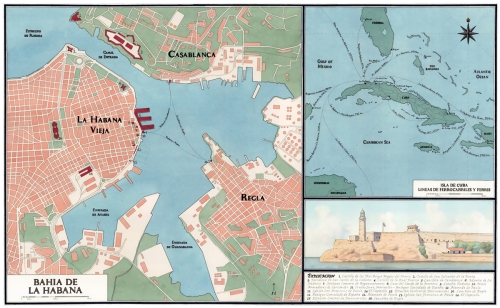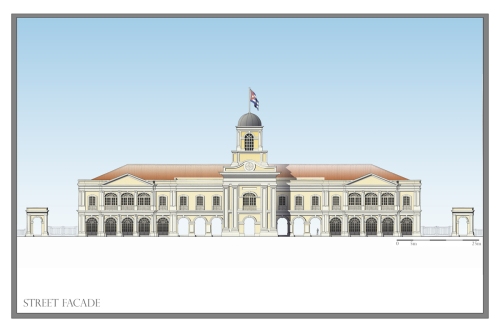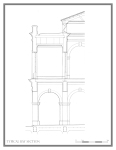Terminal La Habana Vieja – An International Ferry Terminal For Havana, Cuba
by jlevetjr
Last week, President Obama announced major changes to American relations with Cuba that will greatly alter commercial and diplomatic ties between the two countries. This announcement came just a year after I paid a visit to the island to study its architecture and work on a design proposal for a project within Havana. My design was thankfully chosen to receive an Acanthus Award by the Chicago-Midwest chapter of the ICAA.
In 1960, the United States imposed a commercial, financial, and economic embargo on Cuba. Since this time, architectural development within the country has been almost nonexistent, and most of the capital city of Havana has fallen into a severe state of decay. Nonetheless, the architectural character of the city still shines through the neglect and offers a fantastic example of a traditional city for architectural study. As Michael Lykoudis, Dean of the School of Architecture at Notre Dame, says, the city is “one of the few intact cities that we have in the Americas that represents the connectivity to the European roots of American architecture.”

Map designed to demonstrate interconnectivity of proposed terminal to other forms of transportation infrastructure and international ports.
The project I developed was for a new international ferry terminal, the Terminal La Habana Vieja, located along the waterfront within the capital city. I started the project with the design and rendering of a map to demonstrate the international impact of such a terminal. The map was designed to highlight the interconnected transport systems that could be utilized with such a terminal and link the entire island to international ports. The main panel highlights the system of existing roads and railways that connect the hinterlands of the island both to the city and to the proposed terminal. The next panel, in the upper right, shows proposed ferry routes that would directly link this terminal to world ports. The routes were developed by first researching historical shipping routes used for travel and the transport of goods and then combining this knowledge with the statuses of current major ports in other countries. The last and smallest panel shows a view of the Morro Castle, which stands at the entry to the bay and would be viewed by all ships entering and leaving the port. The overall plate was laid out utilizing the self-replicating properties of the golden rectangle to both organize the sheet and to guide the views from panel to panel.
The design for the terminal started out with many challenges: there is no local precedence for a large ferry terminal in Cuba, passive cooling must be utilized for main spaces, and the site is directly in front of a historic waterfront walkway so that any proposed building will separate this public space from the harbor.
A precedent study led to the utilization of Spanish Cabildos, which are found throughout other Spanish colonies. The form uses the region’s vernacular architecture while maintaining a civic presence. It also demonstrates details and moldings capable with local materials that stand up to Havana’s tropical climate.
- Site plan showing main level
- Main/First Level
- Upper/Second Level
The designed plan adapts the Cuban courtyard for the main waiting room to allow for passive cooling, and the permeability of this central portion allows public access to the water. The two terminals, one for domestic travel and the other for international, are pushed to the sides of the building and form the two pavilions of the street and river façade. Commercial program was placed along the street. The central tower becomes the terminus for a series of streets and continues a Havana tradition of towers marking transit terminals. The height of the tower was also made so that it can be seen from the dock of the arriving boats, aiding in understanding the organization of the building before entering.
- Building Section
- Typical Bay Detail
- Typical Bay Section
Visiting and designing within Havana was a remarkable experience that proved to be quite timely. Below is a collection of images from the research trip that shows the current state of decay of most of the city.


























Reblogged this on Memento Vivere.